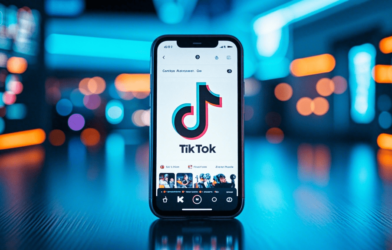How Artificial Intelligence is Revolutionizing Digital Media
Over the past few years, artificial intelligence (AI) has emerged as a transformative force in the digital media industry. From content creation to audience engagement, AI technologies are reshaping how businesses and creators interact with their audiences. The integration of AI is helping media companies scale their operations while enhancing creativity and efficiency. This article delves into the most revolutionary AI technologies that are currently shaping the digital media landscape.
Generative AI for Content Creation
Content creation is at the heart of the digital media industry, and AI has proven to be an invaluable tool for creators. Generative AI tools, such as OpenAI’s GPT models for text generation and image synthesis platforms like DALL·E, have drastically changed the way content is produced. These AI systems can create high-quality articles, videos, and images from simple text prompts, making it possible for creators to produce diverse content quickly and efficiently.
For media companies, generative AI is a game-changer. It streamlines content workflows, reducing the time and effort needed to create compelling stories, graphics, and videos. By automating some of the most labor-intensive tasks, generative AI allows creators to focus on more complex, high-level tasks, all while maintaining creativity and quality. Whether it’s writing blog posts, creating marketing copy, or generating visually stunning images, AI is empowering creators to produce content at scale without compromising on artistic vision.
In fact, platforms like ChatGPT and DALL·E are already helping brands and content creators develop unique articles, creative copy, and visuals that are tailored to their audience’s interests. This AI-driven efficiency opens new doors for small businesses and large corporations alike, enabling them to meet the growing demand for fresh, original content.
Reference:
OpenAI’s GPT models for content creation
Personalized Content Recommendations
AI plays a crucial role in delivering personalized experiences to users across various media platforms. One of the most visible ways AI is used in digital media is through recommendation engines. Popular streaming services like Netflix, Spotify, and YouTube all rely on AI to suggest content based on users’ past behavior and preferences.
These AI algorithms analyze how users interact with the platform—what they watch, listen to, or engage with—to predict what they would most likely enjoy next. The result is a deeply personalized experience that encourages continued user engagement, which directly impacts the retention rates of these platforms.
The personalization of content not only enhances the user experience but also increases the amount of time spent on platforms. As AI learns more about individual preferences, it gets better at curating content that resonates, thus reducing user churn and improving overall satisfaction.
Reference:
How AI recommends content on streaming services
AI-Powered Video Editing and Post-Production
Video content is one of the most widely consumed forms of media today, and AI-powered tools are making the video creation process faster, easier, and more efficient. Tools like Adobe Sensei and Runway ML use AI to streamline time-consuming tasks such as color grading, motion tracking, and scene building. These tools offer advanced capabilities for creators, allowing them to produce high-quality video content with minimal effort.
AI’s impact on video editing is especially apparent in the post-production phase. For example, AI algorithms can automatically detect the most important scenes in a video and suggest edits based on aesthetic rules. Additionally, AI tools can sync video clips to music, enhance audio, and adjust lighting—all in a fraction of the time it would take a human editor to do the same.
These innovations in AI-powered video editing democratize the content creation process, making it possible for creators, even those with little video editing experience, to produce professional-quality content.
Reference:
AI video editing tools like Adobe Sensei
Sentiment Analysis for Audience Insight
Understanding how an audience feels about a piece of content can be just as important as creating the content itself. Sentiment analysis, powered by Natural Language Processing (NLP), helps media companies and content creators interpret audience reactions to programming and advertisements.
By analyzing social media posts, reviews, and viewer comments, AI can assess the emotional tone of the audience’s response to content. Sentiment analysis provides valuable insights into how content is being received, which helps creators and marketers make more informed decisions about their campaigns, messaging, and future content production.
For instance, AI tools can process vast amounts of textual feedback in real time, allowing companies to identify and address issues before they escalate. It can also highlight areas of strength that can be leveraged in future content. Whether it’s a film, a social media post, or a marketing campaign, sentiment analysis allows creators to gauge the public’s emotional connection with their work and tailor future content accordingly.
Reference:
How sentiment analysis is changing marketing
Deepfake and Synthetic Media Technology
While deepfake technology has raised ethical concerns, it has found its place in digital media, especially in digital marketing and entertainment. Deepfakes use AI to create hyper-realistic images, videos, and audio recordings of people, often placing them in contexts they weren’t originally a part of.
In marketing, deepfake technology can be used for things like hyper-realistic visual effects or to dub content into different languages with synchronized lip movements. In entertainment, deepfake technology is being used to bring deceased actors back to life or to create new performances from existing footage. While the ethical implications of deepfakes are still being debated, the technology holds great promise for creative professionals who want to push the boundaries of visual storytelling.
In digital media, synthetic media also extends to AI-generated voiceovers, virtual characters, and even digital influencers. These technologies are revolutionizing how we interact with and consume content, offering new ways to tell stories and engage with audiences.
Reference:
The impact of deepfakes in digital media
Artificial Intelligence in Advertising and Marketing
AI is making a significant impact in the world of advertising by enabling programmatic advertising. Programmatic advertising uses AI to optimize ad placements, targeting users based on their demographics, behavior, and interests. This allows advertisers to reach the right audience at the right time with highly relevant content, increasing the likelihood of conversions.
Additionally, AI tools like ChatGPT are being used to generate ad copy and create marketing campaigns tailored to specific audiences. By analyzing user data and preferences, AI can craft personalized messages that resonate with consumers, making advertising more effective and less intrusive. This level of customization is helping businesses maximize their marketing budgets while improving overall ROI.
AI in advertising is also enhancing customer segmentation and performance analysis, enabling companies to fine-tune their strategies and deliver better results.
Reference:
AI in programmatic advertising
Virtual Influencers and Digital Humans
The rise of AI-generated virtual influencers is one of the most fascinating developments in digital media. Virtual influencers like Lil Miquela are digital personas created entirely by AI, with no real human behind the scenes. These virtual personalities engage with audiences, collaborate with brands, and promote products just like traditional influencers.
Brands are increasingly working with virtual influencers, seeing them as a way to connect with tech-savvy audiences in a unique and innovative manner. Virtual influencers offer companies complete control over their image and messaging, with no risk of scandal or controversy. As AI improves, virtual influencers are becoming more lifelike and capable of engaging in more authentic interactions with users.
Reference:
Virtual influencers in digital marketing
Real-Time Translation and Accessibility
One of the most significant breakthroughs powered by AI is the development of real-time translation and auto-subtitles. These AI-driven tools are helping break down language barriers, making content accessible to a global audience. Real-time translation allows content creators to reach viewers who speak different languages without the need for manually translated scripts or captions.
Additionally, AI-based accessibility features like closed captioning and audio descriptions are ensuring that content is available to people with disabilities. This has the potential to democratize access to media and entertainment, allowing creators to reach a wider, more diverse audience.
Reference:
AI for accessibility in digital media
The Future of AI in Digital Media
As AI continues to evolve, its impact on digital media will only become more profound. The future promises even more advanced AI-driven tools that will further enhance content creation, refine audience targeting, and automate marketing strategies. Additionally, the growing focus on AI ethics and regulation will ensure that AI is used responsibly, minimizing the risks associated with its application.
Businesses and creators who embrace these advances in AI will have a competitive edge in the fast-paced, ever-changing digital media landscape. From creating more personalized experiences to enhancing accessibility, AI is transforming the media industry in ways we’ve only just begun to understand. The future of digital media is AI-driven, and it’s an exciting time for creators and businesses alike to be a part of this evolution.
Reference:
The future of AI in digital media












